INVESTOR TAKEAWAY: Yes, I am doing this “takeaway” upfront for a reason. By the end of this article, I hope that those of you who trade options will have a new appreciation for how much we have in common with today’s farmer. In addition, I hope you will gain a deeper insight into the dynamics of “hedging” within any business that, every year, can count on only one “certainty”: namely, that they face plenty of uncertainty!
Please imagine that you are a “typical” U.S. famer, owning and managing a “typical” U.S. family-owned farm.
 According to University of Illinois farm management specialist, Gray Schnitkey, here is a thumbnail sketch of your circumstances:[1]
According to University of Illinois farm management specialist, Gray Schnitkey, here is a thumbnail sketch of your circumstances:[1]
1) You own 1,200 acres of available, tillable land that you can plant with corn and soybeans this year (2014);
2) You have planted corn on 804 acres (2/3) and soybeans on the other 396 acres.
3) You carry $480,000 worth of debt.
As you and your partner(s) have reviewed the past few years of your operation, you confirmed your own recollection that, since 2007, your farm has experienced above average profitable during all but one year (2009 was a very difficult year!)[2].
So, with the exception of that horrible year (2009), your annual net farm income between 2007 and 2013 trended positively from the low $200,000 range to $275,000 for last year (2013)! At Thanksgiving, you and your loved ones had much for which to give thanks!
However, for this 2014 harvest year, things are looking very challenging. Here is a little hint regarding why you will feel a “big pinch” this year:
The USDA recently projected these “average price” ranges for this harvest
Corn ranging between $3.10 and $3.70/bushel
Soybeans ranging between $9.00 and $11.00/bushel
Compare that with last year’s “Midpoint Price”:
Corn $ 4.80/bushel 29.2% higher!
Soybeans $10.75/bushel 7.0% higher!
Needless to say, you have started to have some heart-to-heart conversations within the family about the need to cut back on expenses, and you’ve paid a visit to your friendly banker to ensure that the banker is both intimately aware of this year’s realities, and supportive of you and your family as you approach the year ahead!
What are the forces at work that have caused your crop prices to fall so hard? Here is a list of most of the significant variables:
a) Strong U.S. Dollar This year, the dollar has had a negative impact on U.S. grain prices
b) Favorable Weather Ever since the “dawn” of agriculture, “weather” has been an annual “wild card” for farmers. They long for “Goldilocks Weather” – not too rainy, and not too dry; not to hot, and not too cool; and especially, weather that is moderate in both spring (planting time) and fall (harvest time). So they need weather that is “Just Right!”
However, that is a “double-edged” sword. It ensures the farmer a great yield. However, when everyone else has a great yield, too, that drives up the “Supply”. And as we know from Econ 101, increased Supply drives down “Price”.
c) Ethanol production changes The changing parameters of ethanol has resulted in less demand for corn to produce ethanol..
d) Foreign Crop Production Bumper crops in other countries lowers price. Drought or frost (or any other quirk of weather) can lower production (and lower supply), thereby raising prices.
e) Foreign Crop Demand The U.S. is a major food supplier for the world. The more overseas demand there is, the higher the price goes. However, a current trend has been China (a major importer of grain) rejecting certain U.S. grain shipments (and sending them back) if the grain contains evidence of certain characteristics that it bans[3].
f) Global Stockpile Levels This year, it is projected that stockpile levels will exceed the “Maximum”. The first time that has occurred in many years.
g) Transport Once you harvest all your grain and get it to your grain elevator, you will have a difficult time transporting it beyond your state! The first availability of railcars in some areas is reported to be December. Meanwhile, river traffic is backed up and there is a shortage of available “barge” inventory.
Because of the confluence of variables from among all of the above factors, the USDA predicts that the U.S. will harvest a record corn crop and a record soybean crop this year! In addition, the projected per acre yield for corn during the 2014 harvest will also be a record! That lowers grain prices!
Meanwhile, you must contend with the very significant variable of your input costs, including: 1) the operational cost of your machinery; 2) gasoline for the machinery; 3) any labor you hire; 4) your seed grain (has been trending upward); 5) your fertilizer (price has been trending upward); 6) servicing your debt load; etc. So your expenses are dramatically higher!
As an example, let’s calculate what you might receive in revenue from your grain sales (assuming you produce at the USDA “average yield”). Here is the range of your projected grain sales:
Corn at $3.70/bushel $518,210 Corn at $3.10/bushel $434,176
Soybeans at $9/bushel $205,168 Soybeans at $11/bushel $167,864
$723,378 $602.040
Therefore, until you actually get your grain all harvested, you face a potential variability in Revenue of over 20%!!
Remember, the above is just the Revenue side of your accounting ledger! Your “net” will be that Revenue less all your Expenses.
The aforementioned Mr. Schnitkey published an article last month that projected the average farmer’s net income for 2014 will range between a high (if all goes “right”) of $146,000 to a low of $87,600 (if enough things go awry). That results in a variability from high to low of 40%!!
Is the range of these potential results too scary for you (ie. 20% and 40%!)? I suspect that those among our readers who currently pull in a dependable salary that is sufficient (or more so) to meet their needs are (especially right now) quite grateful for their blessings!
As that farmer, what can you do to better manage your risk?
Of course, the answer is: You can HEDGE your crop!!
In the current environment, one possible hedging strategy would have been this:
Early this past spring, you engaged in a “forward selling” transaction, committing the delivery of 70,000 bushels of corn and 9,000 bushels of soybeans at the then prevailing price (let’s assume that it was at a midpoint between the 2013 price and the current price).
What are the most obvious advantages and downsides of this strategy?
1) ADVANTAGE: At this point, about half your corn crop would be committed to a price point that is 15% higher than the current price! Pretty cool!
Forward selling, therefore, will ensure you of at least an absolutely certain (minimum) level of revenue for about half of your harvest! That may (or may not) help you sleep better at night, manage major purchases, secure a loan at your bank, etc. Depending upon future crop years and harvest levels, hedging (every year) may also serve to increase the likelihood of your farm’s long-term profitability (and viability).
2) DISADVANTAGE: If the price trend between spring and now had been higher (instead of lower) you would have missed out on that higher price!! If the price at this harvest had been comparable to last year’s price, half of your crop would have pulled in 15% less revenue than it otherwise would have!
ADDED RISK FOR HEDGING STRATEGIES: committing approximately half of your projected harvest to “forward selling” would incur a very hefty cash cost if, for any reason at all, your actual harvest fell short of the quantity of bushels you committed to deliver!!!
Of course, forward selling is only one possible hedging strategy that your friendly broker (hopefully, an expert in agricultural futures and options) could suggest! You can buy futures, sell futures, buy or sell call options, buy or sell puts, or engage in other specialty (but much less liquid and transparent) transactions with your bank.
How do you determine which hedging strategy is “best”? Well, as any of our Market Tamer coaches would remind you… the “best” strategy is the one that meets your risk needs and conforms to your risk tolerance most effectively!! What that means, in particular, is that each one of us would need to find our own personal “best” hedging strategy!
Now, the most intuitive and insightful among you have been asking, for at least the past nine or ten paragraphs:
“What is Petty driving at? Certainly he knows that only a few (if any) within the Market Tamer Community are farmers! So the great majority of us do not need to hedge corn and soybean crops!”
You found me out! The real reason for this extended (but hopefully interesting) discussion of U.S. farming as a business is to provide me a springboard to move into the topic of hedging within the gold mining industry![4]
If we thought that agriculture was a volatile, risky business, just look at the volatility of Gold (represented through SPDR Gold Shares (GLD)). Between November of 2004 and August 22, 2011, GLD moved from about $44/share to a high close of $184.59/share… a total appreciation of almost 320%!
As we all know, the performance of gold during the period of the above chart was (compared with the prior few decades) unprecedented. The strength of that upward push (not just “trend”… but “push”) was in no way expected.
It should be no surprise that the fortunes of gold mining companies vary with the price of gold![5]
Look at this graph of the NYSE ARCA Gold Bugs Index (HUI) between November 2004 and September 2011:
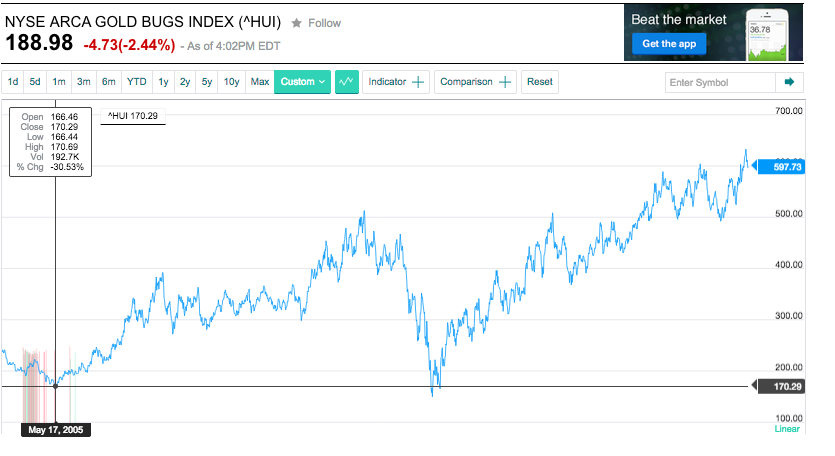 Note the first low on May 17, 2005 ($166.44) and then the lower low October 24, 2008($150.27)… followed by a crescendo high on September 4, 2011 ($628.34). For those without a calculator handy, that amounts to a move of 318% higher between the low and the high!! That comes within 2% of the low to high move in gold!!
Note the first low on May 17, 2005 ($166.44) and then the lower low October 24, 2008($150.27)… followed by a crescendo high on September 4, 2011 ($628.34). For those without a calculator handy, that amounts to a move of 318% higher between the low and the high!! That comes within 2% of the low to high move in gold!!
Therefore, gold mining companies were used to the price of gold varying year after year in ways that sometimes strengthened their profits and balance sheet and sometimes put pressure on profits and financial strength! Therefore, as a “best practice” within the parameters of sound financial management of a mining company, many gold miners regular engaged in “forward selling” of their future gold production.
As we saw earlier in our farm example, hedging serves to smooth out the variations between the “good” years and the “bad” years, leads to more consistency in profitability, and facilitates a balance sheet that, over time, helps lenders and analysts assess the “risk” inherent within that “hedged” company much more favorably! As a result, it was often the case that a “hedged” company was able to access the capital and debt markets much more easily (with a more enthusiastic response).
It is always easy to “look back” and see what companies should have done at any given time![6] However, short of either omniscience or prescience, gold mining companies that continued to hedge their production into and through the first decade of the 21st Century were merely following the long-time industry standard that hedging was a legitimate, logical, and effective way to help manage industry and commodity volatility!!
In our farm illustration, we know that hedging can do a wonderful job of “smoothing” an owner’s intermediate-term profits and balance sheet. That steadier performance and added “financial security” can help an owner manage the business more effectively, as well. However, once the growth boom in China and Asian kicked into gear in the early 21st Century and gold began its inexorable march upwards, what was the financial impact on gold miners who were significantly hedged?
Year after year, as the deadline approached for the annual report to shareholders and the CFO ran all “the numbers” for the year past, it become obvious (more often than not) that company gross sales and earnings were held back by hedging! In the first few years of that trend, the CEO could defend the hedging through reference to prior decades, volatility, and the fact that hedging was a well-established industry practice.[7]
However, the passage of time (and continued rise of gold) began to bring increasingly judgmental questions from attendees during company earnings calls and negative comments by analysts in their reports on gold miners. The day arrived when each hedged gold mining CEO realized that she/he could no longer obfuscate or sweet talk their way through an earnings conference any longer! Hedging was hurting the company’s financial performance and giving the CEO a proverbial “black eye”.
What was the result? Well, the “headline” results were, to put it mildly, attention-grabbing! In 2009, Barrick Gold (ABX) (currently the world’s biggest gold miner by market cap) had to raise over $5 billion to UNhedge its portfolio.
Fortunately for ABX, it was not the only miner in that predicament, since AngloGold Ashanti (AU) spent $6 billion to unwind its hedged positions! (AU currently ranks as the world’s third largest miner.[8])
Needless to say, when that news broke, those shareholders who were not incensed were extremely disappointed. As you can imagine, the trend among gold mining analysts and commentators from 2005 to the present has focused on the negatives of hedging and questioned the ability and competence of managers who waited too long to unwind positions!
In the brave new world of rising gold prices, the “common wisdom” shifted from an approval of hedging as a potentially invaluable industry risk management tool… to the general consensus that hedging was nearly “anathema”. Besides the rising trend of prices, two other new developments accelerated this 180-degree shift in opinion regarding hedging:
1) Option trading became more affordable (commission wise), accessible (such as trading platforms like ThinkorSwim and TradeStation), and frequent (some miners now have weekly options). This empowered the individual investor with the ability to hedge their mining position on her/his own, quite independent of any hedging practices of the company(ies) stock that is held!
2) The introduction of a plethora of Exchange Traded Funds (ETFs) has been a game changer! Look at this (non-exhaustive) list of current ETFs in the space:
GDX Market Vectors Gold Miners ETF
GDXJ Market Vectors Gold Miners Junior ETF
GGGG Global X Pure Gold Miners ETF
GLDX Global X Gold Explorers ETF
RING iShares MSCI Global Gold Miners Fund
LEVERAGED
NUGT Direxion Daily Gold Miners Bull 3X Shares ETF
DUST Direxion Daily Gold Miners Bear 3X Shares ETF
So now, the average investor interested in taking a long position, a neutral position, or a short position on gold mining shares can enter into an almost infinite variety of stock and option positions that could result in him/her carrying a net “Delta” position (vis-à-vis the “Gold Miner Index”, for example) from 0 to as high as their account balance can tolerate! She/he could also (for example) being long ABX and either buy ABX puts, sell ABX calls, or hold DUST … and thereby hold a “hedged” position. [As I emphasized, the variety of positions one can hold is nearly infinite!]
The bottom line is that, in the aggregate, investors no longer want miners to be hedged! When a miner puts on a hedge, the result is that company profits will be reduced if/when the trend in gold prices shifts from downward to upward!
Strictly from the perspective of an investor, it is logical to insist that the company(ies) in which they invest are “hedge free”. The price performance of gold mining stocks (especially the small cap, “junior miners”) is more volatile than gold prices themselves. Therefore, investors in the mining space expect (and need) a higher return from their mining stocks than she/he would get if they invested in GLD. Since each investor can design a mix of stocks, options, and ETFs that suits his/her investment outlook, any miner who hedges on its own only complicates the investment proposition for investors positioning their portfolio within the mining space!
The consequences of this evolution within the management of gold mining companies have been interesting. No one can be certain precisely what the full list of causes is for any given “effect” within the gold mining space, but it is a demonstrable fact that miners outperformed gold during the 1990’s, but have underperformed since 2008.[9]
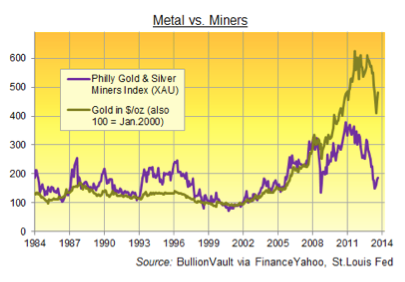 It is clear that “anathema” could be an apt description for the reputation of “hedging” in the gold space these days. As of June of this year only 129 tons of gold production was hedged. That may sound like a lot of gold, but compare 129 tons with the quantity of gold production that was hedged during the peak of the gold bear market in the 1990’s: 3,000tons. That amounts to a reduction in hedging of almost 96%!!
It is clear that “anathema” could be an apt description for the reputation of “hedging” in the gold space these days. As of June of this year only 129 tons of gold production was hedged. That may sound like a lot of gold, but compare 129 tons with the quantity of gold production that was hedged during the peak of the gold bear market in the 1990’s: 3,000tons. That amounts to a reduction in hedging of almost 96%!!
As the price of gold has retreated since August of 2011, miners have had to put a tight rein on their costs – from equipment purchases to new exploration to payroll. According to Thomson Reuters’ GFMS research team, the average industry “all-in cost” of producing one ounce of gold (as of the first six months of 2014) has been pared down to $1,350 – from a full-year cost in 2013 of $1,696!! [An amazing cost reduction in less than a year of 20%!] That may suggest that miner management has been “on its toes”.
However, if the trend in gold prices doesn’t plateau or reverse soon, the management teams of gold mining firms could find themselves “back on their heels” all too soon. Citibank estimated two months ago that 40% of miners in the gold space are consuming cash at an all-in cost of $1,331/oz. The current price is between $1,220 and $1,230! [Ouch!]
Of course, several of “the big boys” are predicting that gold prices have further to fall[10]:
- The Canadian Imperial Bank of Commerce (CM) suggested in December 2013: “As implied by our 2014-end target of $1,000/oz, we… continue to feel the metal still has further to fall…”
- From Bank of America Merrill Lynch (BAC): “Gold values will be hurt by Fed tapering, a resurgent U.S. dollar and a lack of investor interest in the metal. We expect gold to drop to $1,100 an ounce at some point in 2014…”
- And UBS AG (UBS) has already been prove “correct” in its projection from last year: “[the] struggle for gold not only rests with the predominant selling, but with limited positive catalysts looking forward, gold is unlikely to regain its former appeal.”
Nonetheless, I feel bound to remind us all that no one (not even a big institution) knows the price of gold in advance! As confirmation of that fact, I note that it was gold mining consultants from the global financial behemoth, Goldman Sachs (GS), who recommended (at century’s turn) that Ashanti purchase an enormous hedge through derivatives contracts. Although those contracts initially showed positive results, that oversized hedge ultimately led to Ashanti’s demise as an independent company!! So much for GS being composed of market geniuses! [Of course, those GS consultants did walk away with a bundle and a half in commissions and bonuses, which are exponentially higher that what is garnered through simple buying/selling.]
The other fascinating consequence of this new view on hedging is a wide range in levels of “financial health” among gold mining companies. Among the “healthiest” miners, in control of its costs and having maximized its financial flexibility, is Alamos Gold (AGI). At the end of 2013, half of its total assets were in cash ($410 million). With a market cap of just over $1 billion, its cash represents a huge portion of that cap. And more to the point, AGI carries no long-term debt and does not hedge any of its gold production! Finally, AGI has committed to share buybacks and it sports a 2.4% yield.
At the extreme other end of the financial health spectrum is Allied Nevada Gold Corp. (ANV), sporting these metrics at 12/31/13:
Long-term Debt $522.4 million
Current Total Liabilities $735.5 million
Shareholder Equity $777.0 million
That leaves ANV with one of the worst Debt to Equity Ratios in the industry! Making matters worse, they are behind in servicing part of their long-term debt. Imagine the reaction of its bank when the ANV CFO walks into the lead loan officer’s office!
By this point, I believe we can all agree on the following:
1) Within any business that produces an output whose price is volatile, “hedging” is an established, proven, reliable tool through which to “smooth” company financial performance over time!
a) The result is (depending upon the degree of hedging) a more dependable amount of expected revenue by year’s end;
b) A smoother earnings trend over time;
c) A more dependable balance sheet – a great boost for any farm or company that needs bank financing or is considering a new issuance of bonds or stock;
d) An overall reduction in company risk, thereby increasing the probability of longer term survival as a going concern.
2) That being said and agreed upon, the irrepressible bull market in gold between 2001 and 2011 turned investors and analysts into almost inveterate opponents of gold mining companies using hedging to any significant degree.
a) That trend was greatly boosted by:
i) Growth and expansion within gold mining related options trading of all types.
ii) The emergence and multiplying of gold mining related ETFs.
b) The above developments empowered individual investors to actually tinker with and tailor their own “hedges” for their gold mining investments, thereby maximizing the odds of their profitability if their particular bullish/bearish stance on gold mining was “on target”!
c) Gold miners who utilize hedging at the company level only “get in the way” of those individual investors succeeding with their individual strategies!
Given the above, one pronounced and obvious conclusion regarding this huge shift in sentiment regarding gold miner hedging is the following:
Whereas in the years before 2000, the success of investors in gold mining stocks depended upon the exercise by gold miner executives and board members of optimal financial management strategies, including the judicial use of hedging. In other words, the interests of investors were often well served by management teams that hedged gold production! The interests of investors and companies were congruent!
However, since at least 2008, the investment environment within the gold mining space appears to have bifurcated:
a) The average options/ETF savvy investor would rather a gold miner does not hedge, regardless of the impact of that decision on long-term survival;
b) In contrast, the board members and management leaders within any given gold mining firm are attached to ensuring a healthy future for that company (at least near term); and anyone who has a decades-long attachment to any one gold mining company wants to maximize its long-term viability!
That seems to me to be a stark development, with interesting philosophical ramifications that I do not have time to develop here. However, with that being said, I do think you’ll find a brief summary of a March, 2013 study from Australia that I ran across during my research to be of great interest:[11] Optimal Hedging Decisions for Gold Miners: How Much Future Production Should a Gold Miner Forward Sell?
Authors John Betts and Kunal Mamik lead us through a well thought out and logical approach to the topic, including:
1) Analyzing a large test group of gold mining companies to:
a) discern the typical production/earnings cycle within those companies;
b) calculate the typical metrics involved within these companies, so as to enable the construction of an industry “model” for analysis.
2) The development of a mathematical model that calculates the Present Value of the future stream of earnings for a gold mining company:
3) Once the model has been developed and the axiomatic production and financial details of the “model company” have been controlled for all but the variables which are being tested, the authors run a regression analysis.
a) The regression analysis is presented so as to determine the impact of any given level of hedging on:
i) The PV of futures earnings;
ii) The odds of the company’s future survival.
4) The first result is a graph of the various PV of future earnings calculations, as they are impacted by various levels of forward production hedging (between 0 ad 100%).
As you can see, the optimal level of hedging to generate the highest level of future earnings with the least variability is 50%.
5) Here is a chart of the various values that were produced by the regression analysis:
Once again, we can see that the 50% hedging level yielded the highest average lifetime earnings. It also, not insignificantly, leads to a 43% boost in “average company lifetime”, and offers the company a 99% likelihood of surviving through the year ahead!
6) This graph highlights the impact of volatility on the PV of future earnings, based on any given level of hedging. We can see that the 50% hedging level helps the company to navigate through a volatile gold market.
7) And finally, this graph spotlights the “Probability of Survival” – as it changes depending upon hedging and volatility. Once again, the 50% level of hedging appears to present a solid result.
Too bad that the Ashanti CEO did not have this study handy back in the 1990’s when he listened to Goldman Sachs and went overboard on hedging! I commend the authors for the diligence and clarity of their work!
However, regardless of the merits of the Betts and Mamik study, I believe it will be a long, long time before gold mine leaders revert to the level of hedging they employed in the 1990’s. Investors and “Wall Street” will not be of a mind to tolerate that moving forward.
However, it is worth noting that a Russian gold miner, Polyus Gold International (PLZLY), the world’s 8th largest gold miner (by market cap), just entered into a two-year commitment to forward sell over 300,000 ounces of gold.
At the time of that announcement, Thomson Reuters GFMS made a big deal of the fact that those 300,000 oz. pushed the industry (as a whole) into the first “net hedging” position since 2011.
It is my personal opinion (totally without any professional credentials that might prompt anyone to pay attention) that if I was CEO of a big company in Russia these days, especially as led by the inscrutable Vladimir Putin, I would be hedging my business prospects too!! So I wouldn’t place too much weight on that particular decision.
As I wrote at the start… I hope that those of you who trade options now have a new appreciation for how much we have in common with today’s farmer. In addition, I hope you have gained a deeper insight into the dynamics of “hedging” within any business that, every year, can count on only one “certainty”: namely, that they face plenty of uncertainty!
We have learned that hedging served the industry well during the 1990’s, and gold miners outperformed gold itself. However, as the industry moved into the 21st Century and a decade that witnessed a 300% upward push in gold prices, gold mining executives were too slow in reversing forward hedges (in order to ride the wave of higher prices). The result was a dampening of what would otherwise have been higher aggregate earnings within the industry. That trend became a growing sore point among investors, analysts, and commentators through the later half of the decade. Then when ABX announced it used $5 billion to UNhedge its portfolio, investors and Wall Street practically became unhinged.
Those developments, combined with the availability of a plethora of tools available to individuals through which to place their own hedges on gold mining stocks, has brought the industry to the point where it is almost anathema to hedge. Through the end of last year, aggregate hedging was down by 95%, compared to the degree of hedging during the 1990’s!
We also took notice of the seeming bifurcation between the desire of investors and the maximization of the long-term financial health and viability of any given gold mining company.
In our follow-up article, we will pickup on the current gold mining industry as an intriguing focus of investor interest. We will review the case for why gold and miners may be close to a “bottom”, the fundamental reasons why gold prices could rise moving forward, and how to find a range of attractively positioned, un-hedged gold mining companies through which to create positions.
DISCLOSURE: The author owns IAMGOLD (IAG), Market Vectors Gold Miners ETF (GDX), and SPDR Gold Trust (ETF). Nothing in this article is intended as a recommendation to buy or sell anything. Always consult with your financial advisor regarding changes in your portfolio – either subtractions or additions.
FOOTNOTES:
[1] The author has simplified Mr. Schnitkey’s very helpful analytical framework by removing the variable of “Cash Rent”. For my purposes, we will assume that you and your family (siblings, children, parents, etc.) farm all the tillable acreage that you are allowed under current government programs (set asides, Soil Conservation, etc.). We will also remove from the illustration any reference to the massive overhaul of federal agricultural support initiated through the “Agricultural Act of 2014” . There is no way it is as complicated or unintelligible as the “Affordable Care Act” – but if there is ever a night you can’t get to sleep, Google that legislation’s name and start reading it. It will work like a charm to glaze your eyes over and put you right to sleep!
[2] The USDA reported aggregate farm income reached a “near record” level in 2008 ($87.1 billion), with farm prices having soared due to a global food crisis because of unusually tight grain supplies. During 2009, the full brunt of the (bank ignited) “Financial Crisis” brought recession to the U.S. and to farming!! The result was that aggregate U.S. farm income collapsed by 35% — with prices tumbling because of recession’s spread around the globe!
[3] Example: GMO contamination from Syngenta’s MIR 162 GMO maize (corn) variety. That grain variety is not approved for use in China.
[4] Of course, the same principles will apply to companies within the silver mining industry!
[5] Duh!
[6] If only I could make investment choices today based on the news reports and stock tables that will be published tonight or tomorrow!!! I’d be a frickin’ genius!
[7] Quite frankly, in bad years hedging was often referred to by analysts and commentators as an indication of shrewd company management!
[8] It is worth noting that Ashanti was caught in a terribly damaging hedge at the turn of the 21st Century … a hedge that nearly pushed it into bankruptcy…. But instead led to its acquisition by AngloGold. Ashanti’s then CEO, Sam Jonah, confessed: “An excessively large hedge is in effect a speculation… I am prepared to concede that that we were reckless.”
[9] I’d be willing to go out on a limb and suggest that hedging helped miner stocks in the 1990’s… but have been a drag on them ever since “sentiment” in the investment world shifted radically against hedging by 2008!
[10] I can’t help but mention that I did several variations on a search for “JP Morgan Chase on the price of gold”. All I got were stories regarding accusations that Chase proactively manipulates the price of gold. Of course, I would never suggest wrongdoing!
[11] The study can be downloaded at: http://apmr.management.ncku.edu.tw/comm/upfile/File0806111163.pdf
Related Posts
Also on Market Tamer…
Follow Us on Facebook

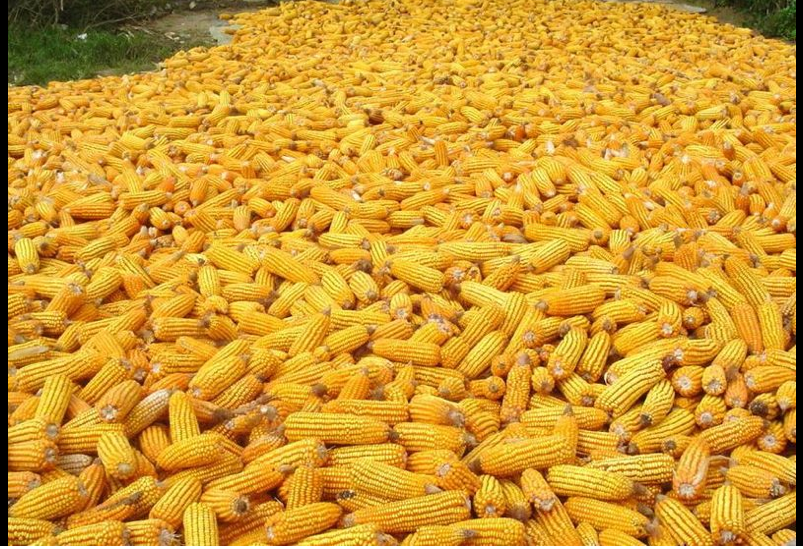

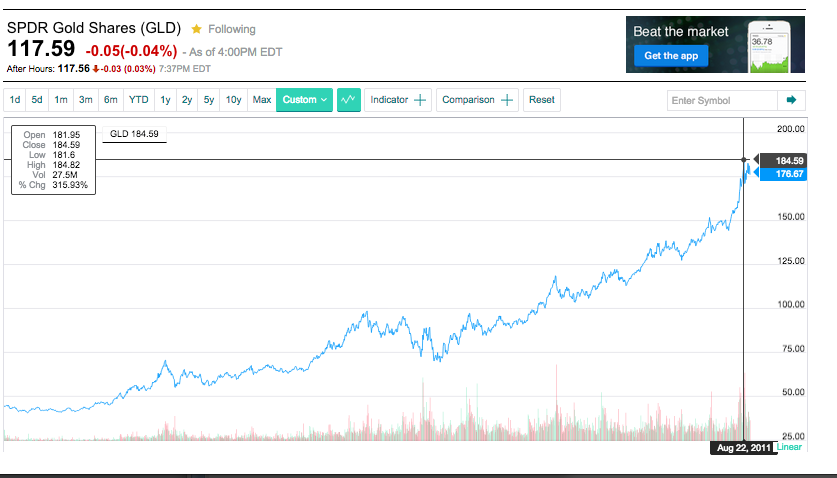
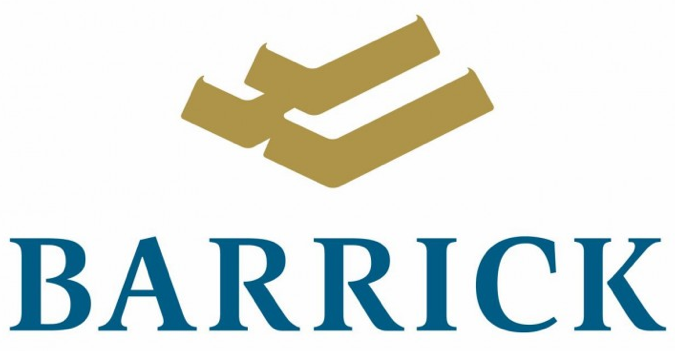
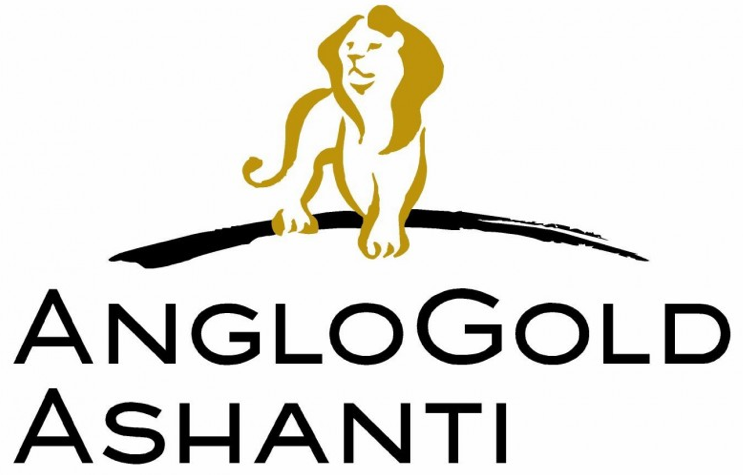
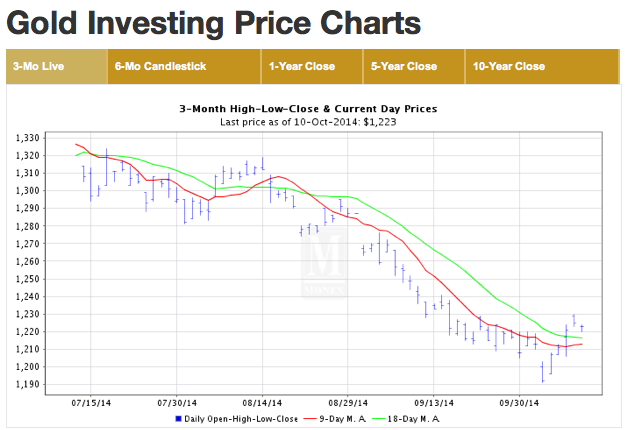
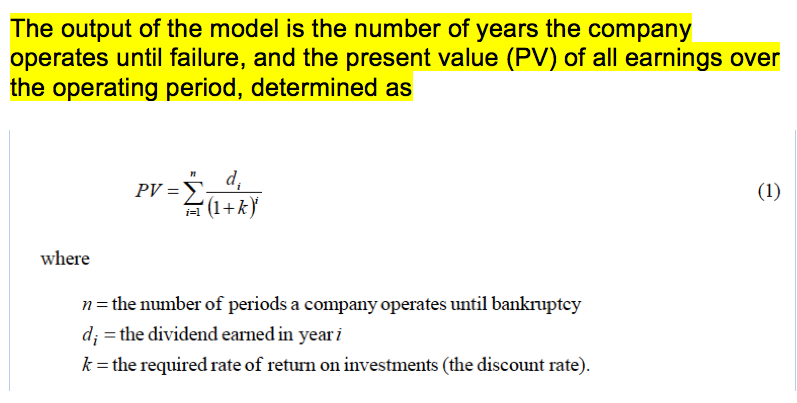
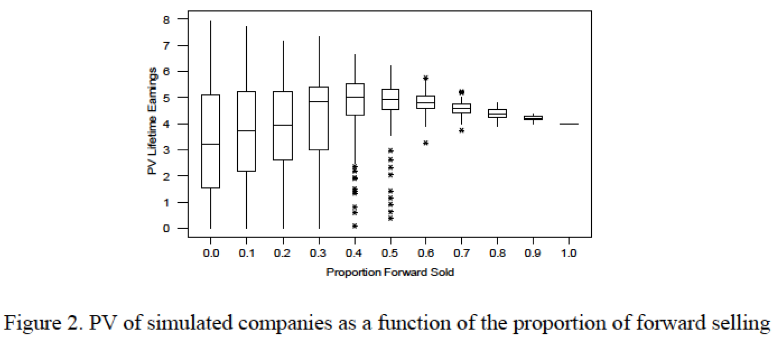
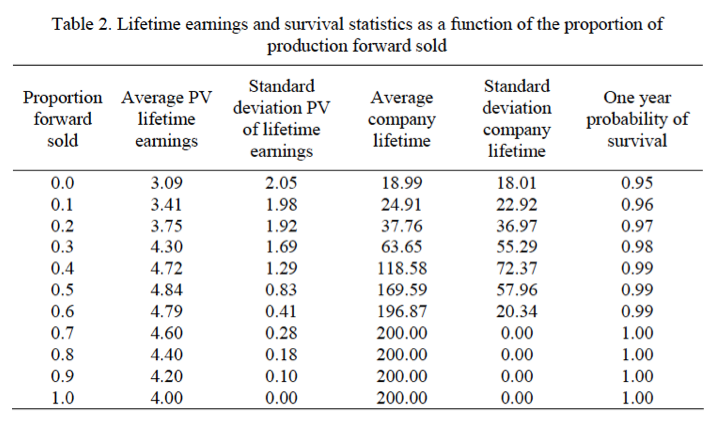
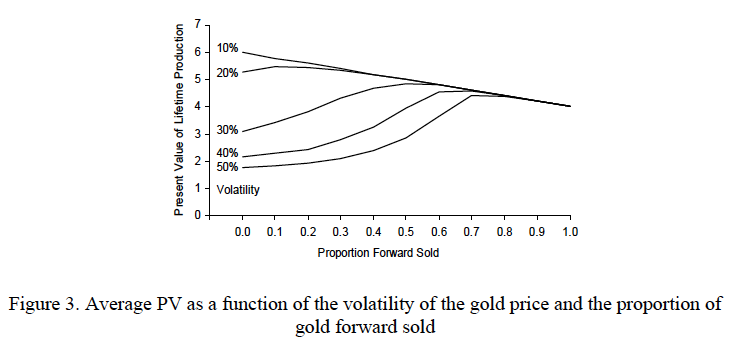
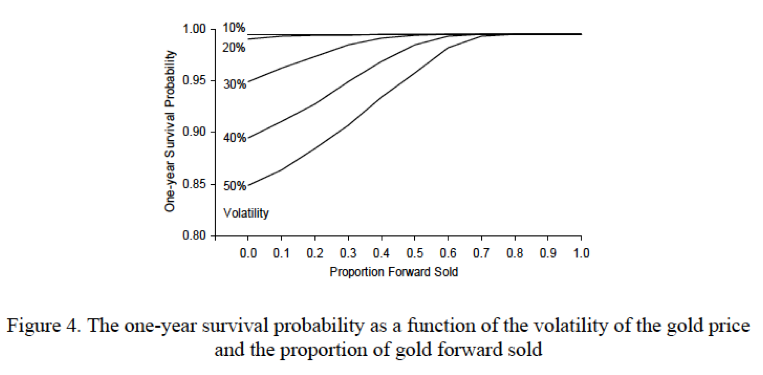


 Is IonQ Stock a Buy?
Is IonQ Stock a Buy?

